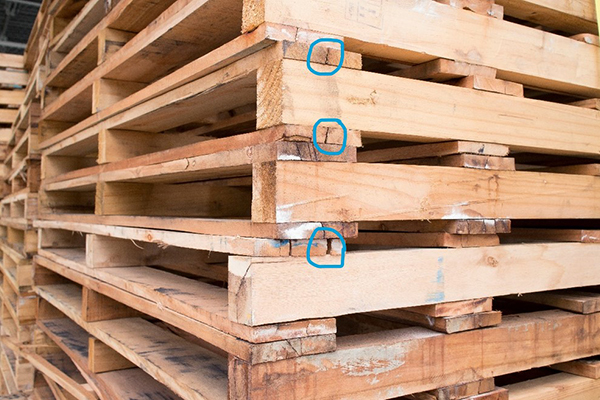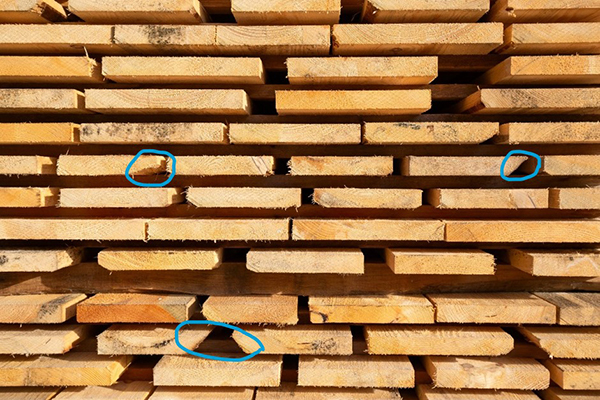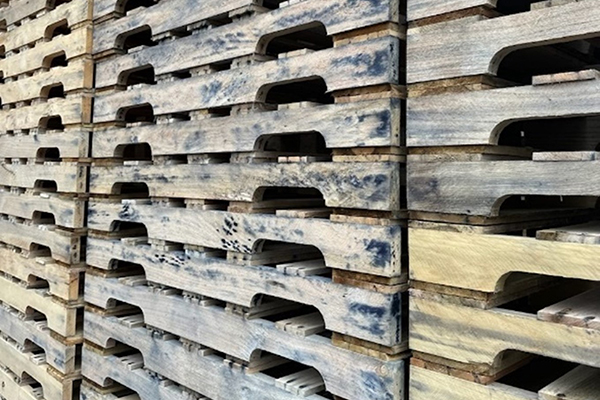New Pallet Quality Issues – Facts
If your company purchases wood pallets you may have noticed variations in the pallets. What constitutes a quality issue versus a cosmetic or benign imperfection? This article aims to help clarify that question.
If your company buys new pallets then there are flaws in almost every batch of pallets. To keep the cost of pallets low, pallet “grade” lumber is generally the least desirable wood – certainly from an appearance standpoint. Railroad ties, crane matting, framing lumber and wood used for finished products such as furniture, cabinetry and other finished goods all command a much higher price. Appearances can be deceiving though. The vast majority of lumber destined for wood pallets is perfectly suited for the job of a pallet: supporting a unit load through the supply chain.
In 2014 the National Wooden Pallet and Container Association, the wood pallet industry’s trade group, authored a Uniform Standard for Wood Pallets. It is an exhaustive paper that quantifies quality characteristics of wood pallets and what imperfections in pallets are acceptable, i.e., not critical for performance, versus flaws that would impact the pallet’s performance.
Because wood pallets are manufactured by the millions each year, there will always be variability in wood species and appearance. Mixed hardwood pallets typically are comprised of species such as oak, sweetgum, poplar, ash and hickory to name a few. In the southern US, southern yellow pine is also used to build pallets while the north uses SPF (spruce-pine-fur) softwoods. Different wood types have different presentations.
Any lumber used to build pallets that has not been kiln-dried is considered “green.” Hardwood pallets are typically almost always made from green lumber and as the pallet ages the wood naturally dries out. This process usually does not endanger the structural integrity of the pallet but does result in some blemishes:
Shakes/splits:

Wane:

Generally speaking shakes, splits and wane don’t have a material effect on pallets unless they’re severe. Wane should not be present where a board and stringer are nailed and shakes or splits shouldn’t be severe enough to compromise the foot of a stringer for example.
Blue stain:

What looks like mold is actually a reaction in the wood from the iron in the saws and nailing machines coming into contact with the wood. It is not mold and is harmless. The easiest way to tell the difference between blue stain and mold is to see if the dark patches are on the surface, i.e., can be smudged or rubbed off. If they can then it’s mold. Blue stain comes from within the wood and cannot be rubbed off.
For a detailed analysis of pallet standards please refer to the NWPCA paper here:
Have further questions regarding new pallets or even recycled ones? At Premier Pallets we can help, please contact us here.
